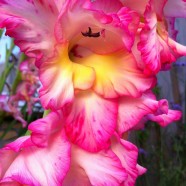
Diverticular disease is a consequence of a low-fiber diet typically of the Western hemisphere. Learn why a prolonged usage of laxatives can be life changing – not in a good way. View the causes and consequences of this condition and how diverticulitis is treated through traditional medicine and the holistic approach. Diverticulum is a pouch or sac created in the lining of the mucous membrane of the intestinal wall. They form by the intestinal mucosa becoming herniated at points where blood vessels pass through the submucosa – intestinal wall areas with less resistance.
Diverticulitis is classified as a civilized disease and not uncommonly seen in nearly half the population over the age of fifty years. This disorder has become very common in Western countries but rarely seen in parts of the world where a high fiber diet is standard.
North America and England may top the list for this condition although other industrialized countries have adopted a similar lifestyle of ingesting far too many refined carbohydrates containing white flour, sugar and other low fiber foods. Constipation is the leading cause for diverticulitis as well as for colon cancer.
Considering the populace with diverticular disease, 10 to 20% develops symptoms that progress to diverticulitis. Diverticulitis is inflammation and infection of the diverticula. Diverticula can be filled with fecal matter, which accumulates until there is an infection of the diverticulum. This condition is called diverticulitis.
Symptoms of Diverticulitis
Diverticulosis is an asymptomatic disease. 80% of patients are diagnosed by incidental findings and the remaining 20% develop signs and symptoms. The most common symptoms of diverticulosis are as followed.
1. Abdominal pain in lower quadrants (usually left) that gets worse after eating and is often relieved by bowel movement or removal of gas.
2. Gas pain from constipation: Gas builds up from having no place to go which can be very painful when the bowel becomes impacted.
3. Bloating – mainly from gas build-up and backed up fecal matter.
4. Feeling of incomplete defecation – stools may become narrow due to fecal matter becoming encrusted on the bowel walls. You may go everyday but inadequately.
5. Pain in lower left quadrant.
6. Diarrhea or constipation – Constipation is the main problem but both conditions can be intermittent.
7. Gastrointestinal hemorrhage.
8. Leukocytosis
9. Abscesses
10. Fistulas
11. Peritonitis
12. Perforation – A perforated bowel is very dangerous. It is of utmost importance to correct constipation through diet and not laxatives.
Laxatives weaken bowel structure making it difficult or impossible to have regular bowel movements. The walls of the anus can and have prolapsed – protruding upon bowel evacuation. This is not something you wish to happen. An enema would be the suggestion to create space and keep things moving until the diet is under control.
Holistic Protocol
A few areas are addressed at once for a quick turn around and to stop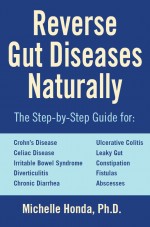 future sacks from forming. If the condition is acute, the inflammation needs to be dealt with. Relieving constipation does not always relieve the pain entirely. If the pouches/sacks have been blocked for too long, there has been a lack of circulation which induces a build-up of bacteria and infection. Overtime, once the bowel continues moving well, pain in not felt even though the pouches remain. Herbs are used temporally to relive gas, inflammation and pain without any worries of adverse side effects. To combat infection and replace antibiotics, review my several posts on killing viruses, bacteria and other pathogens. The protocol and approach is not complicated and benefits far more than the acute condition being treated. Abscesses and fistulas are treated directly with retention enemas made with a healing tea formula and by drinking this formula 2 or 3 times a day – initially. Once the level of discomfort has reduced, the condition is managed through diet.
future sacks from forming. If the condition is acute, the inflammation needs to be dealt with. Relieving constipation does not always relieve the pain entirely. If the pouches/sacks have been blocked for too long, there has been a lack of circulation which induces a build-up of bacteria and infection. Overtime, once the bowel continues moving well, pain in not felt even though the pouches remain. Herbs are used temporally to relive gas, inflammation and pain without any worries of adverse side effects. To combat infection and replace antibiotics, review my several posts on killing viruses, bacteria and other pathogens. The protocol and approach is not complicated and benefits far more than the acute condition being treated. Abscesses and fistulas are treated directly with retention enemas made with a healing tea formula and by drinking this formula 2 or 3 times a day – initially. Once the level of discomfort has reduced, the condition is managed through diet.
*For effective natural solutions to the above symptoms, pick up Reverse Gut Diseases Naturally for step-by-step protocols that really work!
There are many other areas of the body being adversely affected by a sluggish colon. Cancer is more predominate in a body that has experienced extended bowel stagnation besides colorectal cancer. The lymph system will be overloaded. The pathogen colonies within the body will be much higher; yeasts, fungus, bacteria, worms and more. These unwanted guests are feeding off the nutrition that was meant to feed your blood and tissues. Skin eruptions and bad breath are other common occurrences accompanying a sluggish bowel. Lower energy and decreased circulation is felt. Toxicity is a problem to the liver, and tissues, especially if there are extra unwanted pounds. Toxic waste accumulates in the fat tissue. To have clean bill of health we need a clean body.
Traditional Allopathic Treatment
In most cases with some of these complications, surgery is not required and patients are prescribed antibiotics, stool softeners and anti-inflammatory medications. The cause is predominately constipation. The diet is not nearly adequately addressed to turn this condition around and prevent future incidences.
Treatment at the hospital is indicated if the patient shows signs of peritoneal inflammation or infection and fever. In this case, the liquid diet treatment consists of intravenous serum and antibiotics. The 10 to 15% of patients with diverticulosis usually end up having surgery. Surgical treatment of diverticular disease is indicated in case of perforation, abscess with poor response to medical treatment, obstruction, fistulas or gastrointestinal bleeding.
Patients treated electively by surgery usually have the diseased area removed without a temporary colostomy. It is very rare for a patient to need a permanent colostomy. Bowel function and general health return to normal after operation and recurrence of symptomatic diverticular disease or complications are rare. While diverticula usually do not shrink or disappear, most patients have no symptoms or have symptoms of mild intensity which are controlled with medication.
Diagnosis of Diverticulitis
Diagnosis of diverticular disease is made by barium enema and endoscopy. This test can show the inside of colon and detect small lesions and abnormalities in the mucosa. These tests help determine whether symptoms are caused by diverticular disease or have other causes. In the case of patients with any of the above complications, further tests are usually performed to detect leukocytosis (increase in white blood cells by infection) and confirm the disease.
Treatment of Diverticulitis
In the case of patients with diverticular disease without severe symptoms, a diet of high fiber, fresh raw juice enemas initially to remove impacted or built up fecal matter. NO laxatives even in the natural form. Gentle fiber such as ground flax seeds and water soluble fiber found in the legume family, fruits and vegetables. Fiber is to be eaten several times a day at mealtime. Wheat bran or rice bran can be added to soups, fruit juices and purees. Fluid intake should be increased to 8 cups per day in order to help avoid constipation. In case of more severe inflammation (diverticulitis), a soft diet of quality nutrition may be required for a short period.
Review my Posts on Fiber for the different types and gluten free choices for special diets.Treatment at the hospital is indicated if the patient shows signs of peritoneal inflammation or infection and fever. In this case, the liquid diet treatment consists of intravenous serum and antibiotics. The 10 to 15% of patients with diverticulosis usually end up having surgery. Surgical treatment of diverticular disease is indicated in case of perforation, abscess with poor response to medical treatment, obstruction, fistulas or gastrointestinal bleeding.
Patients treated electively by surgery usually have the diseased area removed without a temporary colostomy. It is very rare for a patient to need a permanent colostomy. Bowel function and general health return to normal after operation and recurrence of symptomatic diverticular disease or complications are rare. While diverticula usually do not shrink or disappear, most patients have no symptoms or have symptoms of mild intensity which are controlled with medication.
Incidence of Diverticulitis
Diverticulitis does not usually occur before the age of 30. Diverticular disease demonstrates a clear prevalence to age; 5-10% of cases occur in people over 45 years; 50 – 60% from the age 50 – 70 and 80% in older than 85 years, perhaps due to the gradual decrease in tensile strength of the intestinal mucosa. Women develop the disease more than men. Without question, dietary influence is the major culprit. By observing most peoples diets as they age throughout industrialized countries, the reasons are evident as to why this disease is on the rise. A typical diet consists of too much starchy food, heavy protein and very little to no fresh fruits and vegetables, as well as being high in salt, sugar and low in fluids.
Pathology of Diverticulitis
Clinically, diverticular disease develops for two reasons:
- Weakness of the intestinal wall: the places that are weak points where it is more easily herniated, nerves and blood vessels protrude through the muscle of the intestinal wall.
- Increased pressure inside the colon: exaggerated contractions of the colon together with a diet low in fiber produce an increase in intraluminal pressure.
Copyright © 2016– All Rights Reserved – Michelle Honda Ph.D.
Announcement
Look for my new forthcoming books “Reverse Heart Disease Naturally” (Jan.31, 2017) and “Reverse Inflammation Naturally” (May 31, 2017) and “Reverse Thyroid Diseases Naturally” (Fall 2017)
Reverse Heart Disease Naturally 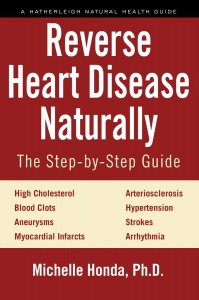
Conclusion
If you want an alternative approach that really works, pick up a copy of my book ‘Reverse Gut Diseases Naturally’. This book specializes in gut dysbiosis such as (Crohn’s & Colitis), IBS, Diverticulitis, Constipation, and associated symptoms of diarrhea, bleeding, bloating and gas. Also, all essential information for empowering the body to heal and restoration of the body, is included in great detail in this book, as are the best natural solutions and replacements for most mainstream mediations such as those for depression, anxiety, antibiotics and killing superbugs, pain and inflammation and much more….
Calm and heal diverticulitis in Sacramento, Long Beach, Bakersfield, Anaheim, Simi Valley & Costa Mesa with Michelle Honda PhD Holistic Doctor. She is an expert at restoring health via natural means because of the breadth of her education and clinical experience combined. You can renew vibrant health whether you are coping with women’s issues, hormone issues, diabetes, heart disease, skin problems or gastrointestinal disorders like Crohn’s or Colitis.
Michelle’s book Reverse Gut Diseases Naturally is a fantastic body of work that reverses and heals Crohn’s, Colitis and other gut disorders like IBS, celiac disease and more. Her results are so unparalleled for her Colitis and Crohn’s patients that some might think of her unbelievably appreciatively – she’s that remarkably effective. In 2016-2017, her next book is going to be published on reversing inflammation naturally. Many people doing this holistic and nutrition work are amazed at how their life can start to change in 30-60 days from Michelle’s safe, natural remedies, diet and solutions. A renewed healthy life awaits you again. Get started today.
Where to Purchase Reverse Gut Diseases Naturally
Amazon.com
Hatherleigh Press
Local book stores USA and Canada
Follow Michelle Honda on:
Michelle Honda’s Blog
Blog Book Page
Blog Book POST
Facebook
View Patients Testimonials and Frequently Asked Questions (FAQ) on Michelle’s book. Check out Michelle Honda’s Programs which can be very helpful when considering purchasing the book or working with her directly.
For those who have need of a one on one appointment for that personal touch, you may book with Michelle Honda through the office or by telephone. Contact the clinic Renew You (905-304-0111). Appointments by telephone are also available.
Disclaimer
While close attention was given to the accuracy of information in this article, the author accepts neither responsibility nor liability to any person with respect to injury, damage, loss or any circumstances involving alleged causes directly or indirectly related to the information in this article. The sole purpose is to educate and broaden ones awareness. This information is not meant to replace medical advice or services provided by a health care professional.





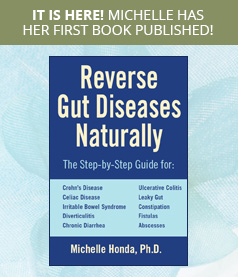

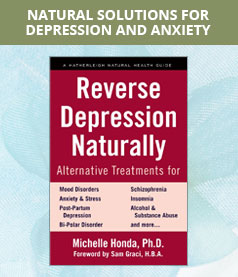
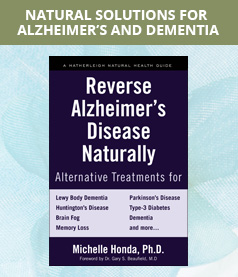
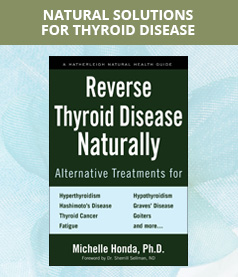

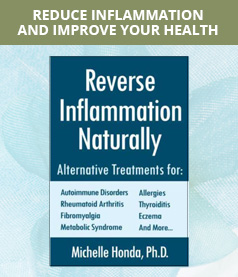
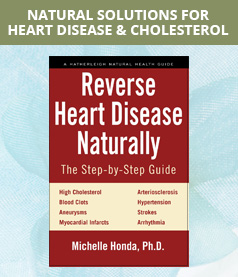
Follow Us!